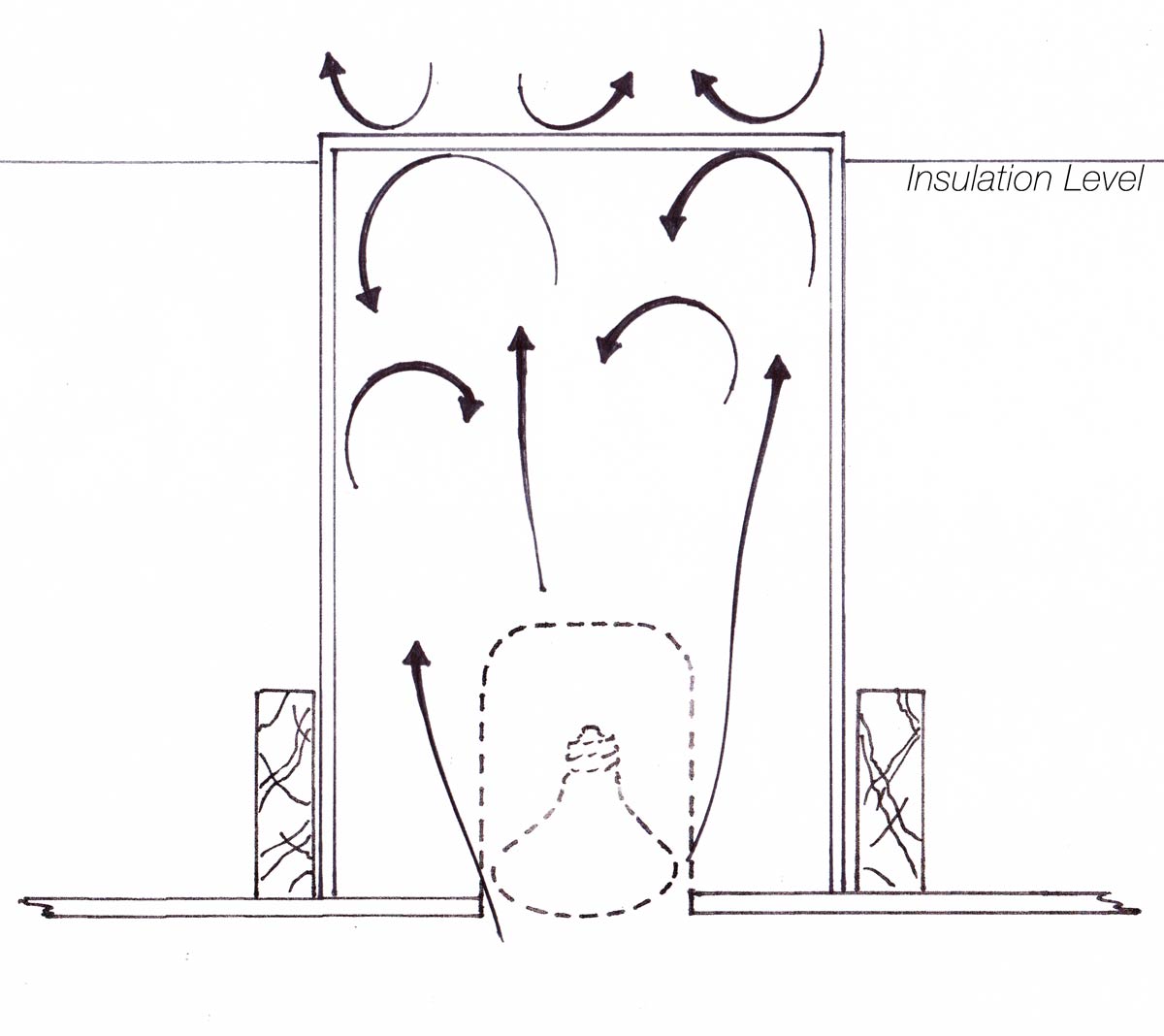It all started with a problem:
How best to address the energy wasted by billions of recessed lighting fixtures throughout the world?
There are over 600 million non-IC can lights in the US alone that require special treatment. These lights are the single biggest energy waster in the home insulation envelope. The challenge is balancing efficiency with safety. Just adding insulation without proper treatment defeats the purpose of insulating.
Our research revealed that no existing solution addressed both efficiency and safety without compromising on one or both. Common knowledge held that Non-IC lights could not be covered. We did not accept this. Thus we set out to develop CanCoverIt.Finding a solution became a journey of discovery in applied geometry culminating in development of CanCoverIt, the perfect solution for retrofits and new installs, Non-IC and IC fixtures.
Soon after fielding for Non-IC we began to have customers seek us out to solve their IC can-light problems, from continued energy waste to water dripping from fixtures. It turns out that air-sealing was not the whole story, and was even causing more problems around moisture and mold buildup.
Today CanCoverIt is recognized as the only true solution for all can-lights, bathroom fans, exchange fans, speakers, and other metal attic penetrations!
Before CanCoverIt
Existing Solution Landscape Full of Compromise
Original Non-IC Can Light (Downlight)
Safety: Pass | Performance: Fail
Most common fixture type with more than 500 million in use
Heat entrapment prevention requires no Insulation contact
Early versions have no thermal shut off mechanisms
Later models may have thermal shut off set for high heat
Metal fixture is highly conductive and can attract condensation
Designed to draw air through fixture to prevent overheating
Critical energy waster - severely compromises insulation envelope
Non-IC Width Open Barrier Insulating Treatment
Safety: Pass | Performance: Fail
Efforts to improve energy efficiency added insulation thickness above fixture
Safety code evolved to read: “no insulation above in a manner to entrap heat”
Chimney effect phenomenon can draw more air through than untreated fixture
Metal fixture remains highly conductive and can attract condensation
Open attic space creates hot and cold spots and drafts in the ceiling
Critical energy waster - severely compromises insulation envelope
Barrier use can negate overall R-Valve benefit of added insulation thickness
Non-IC Open Barrier Treatment with Air-seal Insert
Safety: Fail | Performance: Fail
Can effectively stop air flow through the fixture, but not around fixture
Potential overheating hazard in hot ambient temperature attic conditions
Metal fixture remains highly conductive and can attract condensation
Open attic space creates conductive hot and cold spots in the ceiling
Can entrap heat and shorten the lifespan of CFL and LED light bulbs
Not compatible with original Non-IC airflow intent to prevent heat entrapment
Does not address conductive energy loss and compromises insulation envelope
Non-IC Low Flat-top Box Treatment with Vents
Safety: Fail | Performance: Fail
Flat top box terminates within insulating layer to improve R-Value
Weak structure can sag or even collapse under the weight of insulation
Limited size provides insufficient air volume above and/or around fixture
Incandescent bulb generates heat at a faster rate than it can dissipate
Insulation blocked openings provide slow air venting and entrap heat
Addresses conductive heat transfer, but is moisture and airflow permeable
Concentrates high heat around fixture and sensitive electrical components
Non-IC Flat Box with Open Vent Channel
Safety: Fail | Performance: Fail
Flat top box terminates within insulating layer to improve R-Value
Provides insufficient air volume above and/or around fixture
Flat horizontal top creates dam effect that impedes airflow and entraps heat
Weak structure can sag or even collapse under the weight of insulation
Concentrates high heat around fixture and sensitive electrical components
Incandescent bulb generates heat at a faster rate than it can dissipate
Addresses conductive heat transfer, but is moisture and airflow permeable
Non-IC Tall Box Treatment
Safety: Fail | Performance: Fail
Flat top box (typically drywall) terminating above insulation layer (envelope)
Size provides more air volume to dissipate heat, but compromises insulation
Addresses airflow (convection), but not conduction and moisture conditions
Non insulated top transfers energy and compromises overall home insulation (R-Value)
Conduction alone may not dissipate heat at a fast enough rate to prevent overheating
High heat concentrations within box may damage sensitive electrical components
Closed box can entrap heat, with peak hazard occurring during hot attic conditions
Non-IC Tent Design Treatment
Safety: Fail | Performance: Fail
Tent style sides can sag or even collapse under the weight of insulation
Angled sides allow hot air to rise with less restriction than a flat top box
Angled sides allow top area to be better insulated than a tall box
However, the shape does limit top insulation thickness along panel width
Shape limits compartment size and air volume in critical area around fixture
Size to air volume ratio above and/or around fixture is not optimum
Enter CanCoverIt Universal Series
The Ultimate Solution
Safety: Pass | Performance: Pass
Stable base optimizes air space safety and makes installation a breeze
Converging top panels provide thermal performance and strength
Turning the light on activates the safety mode to prevent overheating
Materials are non-conductive fire and mold resistant, air and watertight
Secondary covers protect the vents even when blowing in insulation
Innovative design provides a lifetime of fail-safe energy efficiency
"I had been using Insullite, but constructing the box in the cramped attic is a bit tedious, not to mention trying to tape the seams. After trying CanCoverIt once, I am sold. I have already told my distributor that they better start carrying CanCoverIt if they want my business."
- Kenny, contractor, Colorado Springs, CO
"What do you like most about CanCoverIt?" 2:04
"What about other solutions like IC can-lights?" 3:31
"Install myself or hire a pro?" 4:12
"Advice for homeowners?" 5:21
"How does CanCoverIt fit into my budget?" 6:23










